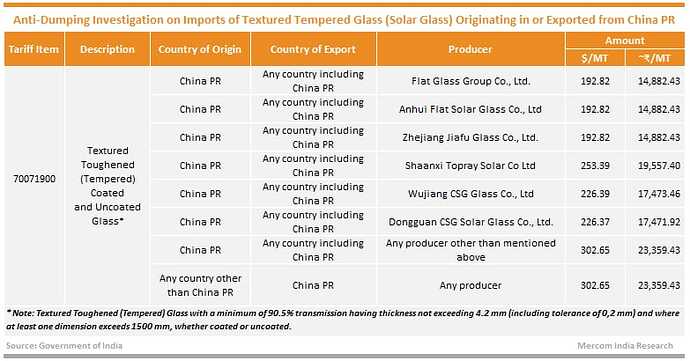I have been trying to wrap my head around following questions. Feel free to add your inputs or correct mine.
Q1. Is demand really taken care of? What is the impact of aggressive chinese capacity expansion in recent years?
Q2. What are the most important variables for stock re-rating?
Acc to Mercom, Solar installed capacity can reach 3000 GW or 3 TW by 2030
link: Global Installed Solar Capacity Could Reach 3,000 GW by 2030: Report - Mercom India
World is currently at ~1000 GW.
This equates to roughly 3000-1000 =2000 GW in 8 years or 250 GW/year on average.
In FY23, 300 GW of renewables capacity is projected to be installed, out of which, ~60% or 180 GW can come from solar.
This implies world needs 200-250 GW of solar glass each year till 2030. The number can increase as we move towards 2030.
Lets look at existing global solar glass capacity now. Since bulk comes from China, lets focus on that.
Acc to PV magzine,
Link: Chinese PV Industry Brief: Solar glass capacity hits 64,000 MT per day – pv magazine International (pv-magazine.com)
China is at 64,000 MT/day out of which 59,000 MT/day is operational. Assuming 1000 TPD = 5 GW, this translates to roughly ~300 GW of existing solar glass supply power with Chinese.
There are some capex being taken worldwide that I am aware of. Couple of companies (non-indian) I came across are:
- Canadian Premium sands - they plan to come up with 4GW worth solar glass capacity by 2025 (phase 1). Attaching their investor presentation
- French company - Alliaverre - plans to make 600 MW. Link: Alliaverre to produce solar glass in France – pv magazine International (pv-magazine.com)
However, since these are minute in scheme of things, can be ignored for now.
Now, if we compare 300 GW of existing capacity with the 200-250 GW needed by 2030, it looks like supply > demand. In a world without duties or china+1 sentiment, china would keep dumping cheap solar glass on the world and local industry will not flourish. But thats not the case as we know.
Implication 1: Solar glass demand (vis-a-vis supply) can only be ignored as a key variable if duties uphold for extended timeframe. Without duties, the current valuation and profitability does not make any sense.
The duty as proposed by DGTR is impressive and applies to all imports (not just china). Has to be seen if it is implemented in full. AR says imports from Vietnam account for 60% imports. Finance ministry generally takes 2-3 months to act on DGTR recommendations (based on 2-3 past data points), which means we should see an announcement by Aug mid (if there is one)
Implication 2: since China only uses 20-25% of its solar glass production for domestic consumption and rest is export oriented, we may see either some of these companies lowering production or closing altogether. Remember there are 300+ solar glass producing companies in China alone. I can only guess that this will lead to solar glass prices going towards normal historical levels (2015-2020) of INR 97-105 / sqm / mm. Factor in commodity inflation, and the new base prices could be higher, no idea how much. But, I have doubts over mgmt. guidance of 30-35% ebitda margins as communicated in Q2 FY22 concall (page 18 of transcript). I say that because BRL was at 35% ebitda margin in Q4 FY22 when avg solar glass realizations were around INR 133 / sqm / mm. Add further inflationary pressure and lower glass prices, and even 30% ebitda margin looks thin. Expecting Q1 to be below 30% given the sky high fuel prices.
So, in short, extended import duty and low cost inflation are paramount for BRL to outperform the expectations baked in the current stock price. My valuation model suggests 35-40% EBITDA margins with 115-130 sqm/mm glass price levels should do the trick. Anything below that and we could be in rough waters.
A third variable (apart from duty extension and cost inflation) is aggressive capacity expansion. But, having seen mgmt delaying capex for SG3 by 2 months and increasing project cost from 600 to 688 cr, this also depends to an extent on level of duty extension and cost inflation in future. Therefore, I see this as an important but secondary variable in the thesis.
Look forward to hearing your views/counterviews.
Disc - invested, biggest position in pf
CPS-2022-MAY-Corporate-Presentation.pdf (1.8 MB)

